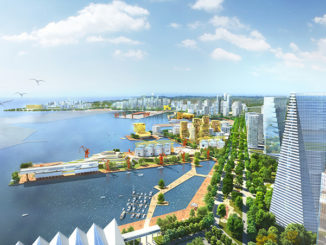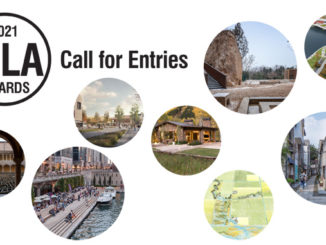Winner of the 2021 WLA Awards – Award of Excellence – Concept Analysis & Planning
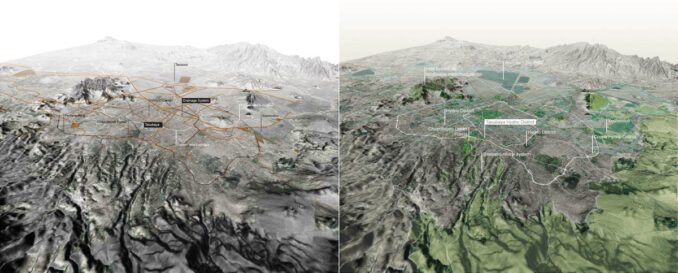
The main objective of this research is to explore the potential of medium-scale redevelopment ‘Hydric Districts’ to move towards a water sensitive Mexico City. As opposed to large-scale, conventional grey infrastructure or small-scale disparate green infrastructure projects, the medium-scale ‘Hydric District’ may offer a more grounded design framework that could become a replicable public policy to address the water crisis in Mexico City while enhancing livability and biodiversity.
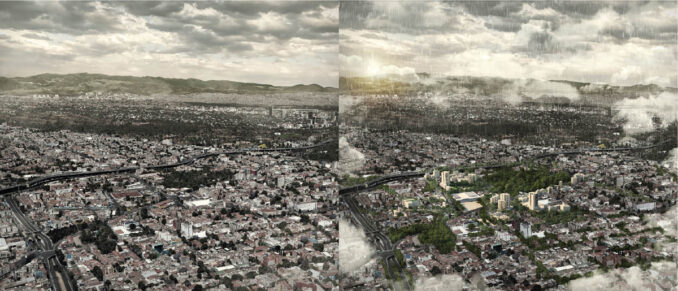
Mexico City is undergoing one of the largest environmental crises in the world that have been aggravated by an inadequate and linear model of indiscriminate water extraction, pollution and drainage. This undermines the city’s potential to develop sustainably and understand water as an asset, not as waste. Furthermore, the city faces a critical water shortage which is compounded by the socio-spatial disparity in its distribution.
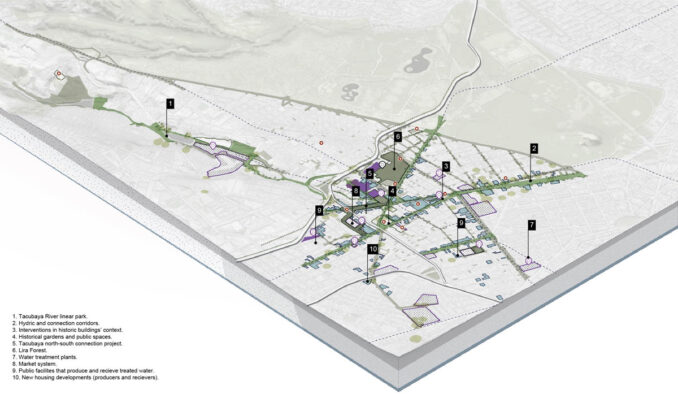
While there are enormous pressures to redevelop sustainably, water management policy is becoming increasingly central to the negotiation between urban redevelopment and water sustainability.Historically, Mexico City’s approach to the water crisis has been either at the monumental scale of grey infrastructure or, more recently, at the scale of uncoordinated green infrastructure projects and while plenty of resources are allocated for public and private construction works, almost none are channelled towards the exploration of sustainable water management systems.
This research reviews the historic area of Tacubaya as a testing ground for a ‘Hydric District’, which can serve to apply alternative solutions of decentralized water management. The ‘Hydric District’ is a highly implementable urban planning and design framework, that integrates green and grey infrastructure to decentralized management of urban water, through strategies of reuse, treatment, retention and infiltration of water, while increasing livability and enhancing urban biodiversity.
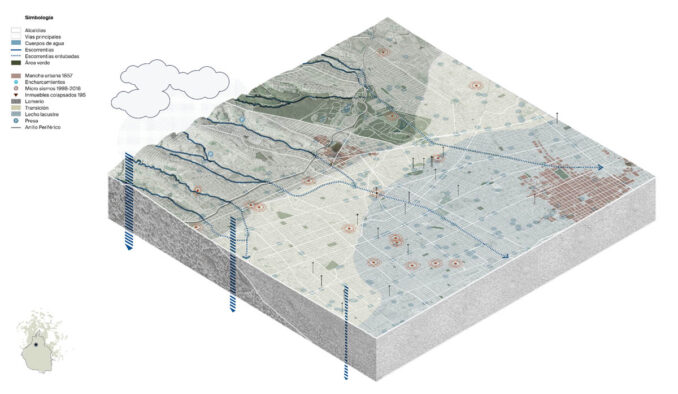
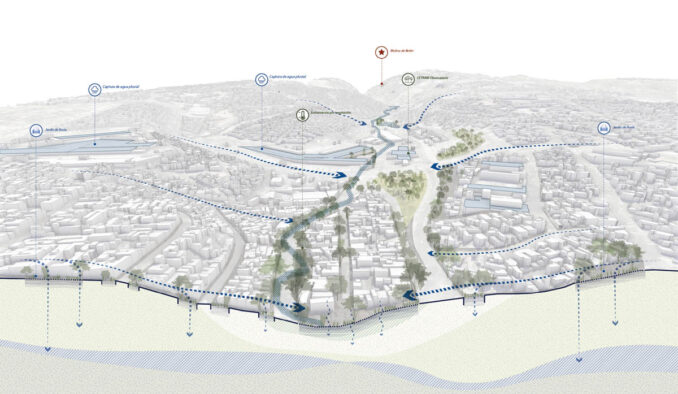
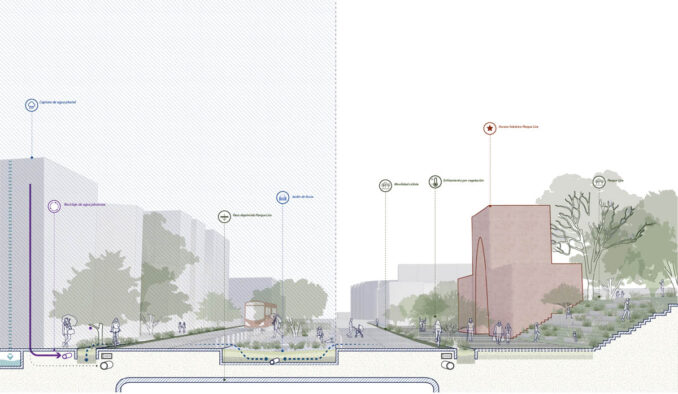
Implementing the first medium-scale ‘Hydric District’ in Mexico City is technically, financially and politically, feasible because:
- There is a political will to apply a medium-scale urban planning instrument to redevelop and densify the historic neighbourhood of Tacubaya.
- Local authorities are willing to deploy a series of public projects in this area but lack an integrative framework.
- Tacubaya is strategically connected to other urban areas of Mexico City.
The ‘Hydric District’ proposes three main analytic lenses (1. Reveal water history, 2. Consolidate and expand the open space system and 3. Urban water as a resource, not waste), as well as spatial strategies that translate into a series of integrated urban and landscape projects in the dense urban fabric of Tacubaya.
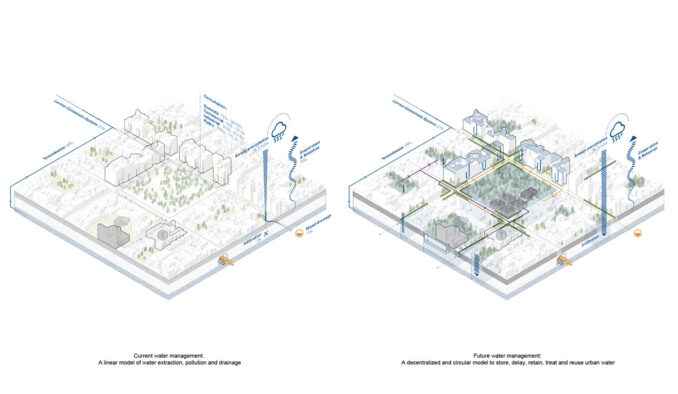
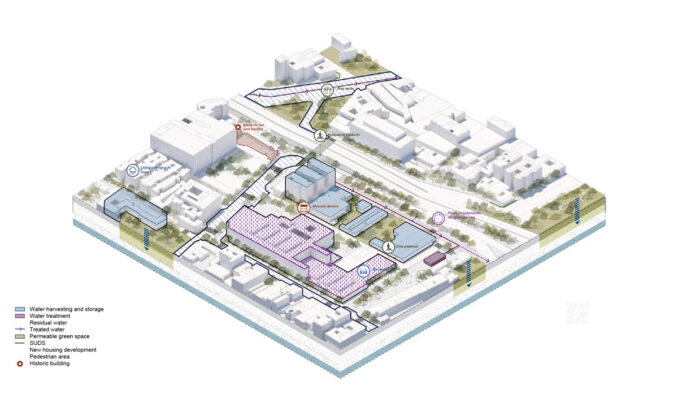
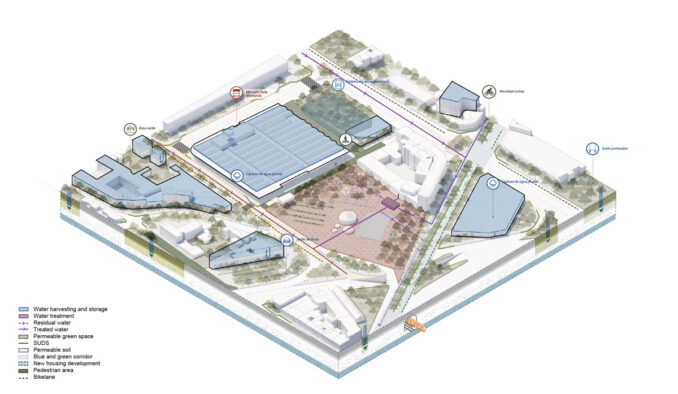
This research argues that design’s commitment is neither with the human-centric approach nor with the mercantile immediacy, but with the life improvement of both humans and other living beings. The project proposes the collective exploration of new models and alternative ways of inhabiting cities, guided by the universal principles of equity and sensitivity to the environment.
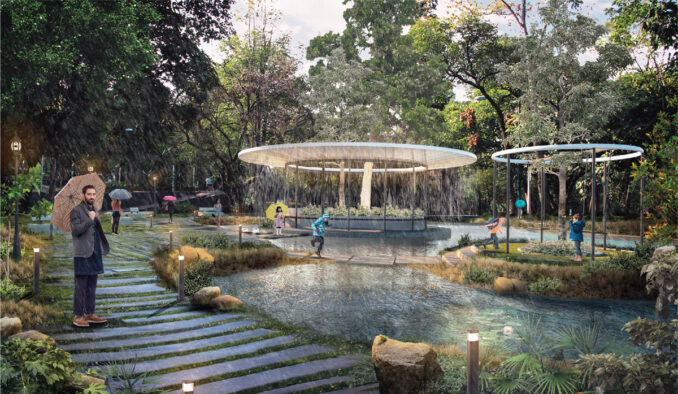
Perhaps we can’t bring back the lake, but in the next 50 years, we foresee a more water-sensitive and decentralized model for Mexico City. This can be achieved by scaling up medium-scale ‘Hydric Districts’, a model that understands how crucial water is for life in cities.
Mexico City’s Medium Scale Hydric District – Tacubaya
Project Credits: ORU – Oficina de Resiliencia Urbana, Anita Berrizbeitia and Arzoz
Team: Anita Berrizbeitia, ORU team; Adriana Chávez Sánchez, Victor M. Rico Espínola, Elena Tudela Rivadeneyra, Carolina Crespo Uribe, Iván Guzmán Estrada, Lauréline Lhuilier, Bernal Pérez Gálvez and Néstor Rangel Hernández, Arzoz; Mónica Arzoz Canalizo and Andrea Olavarrieta De La Torre.
Image Credits: ORU – Oficina de Resiliencia Urbana, 2021.

